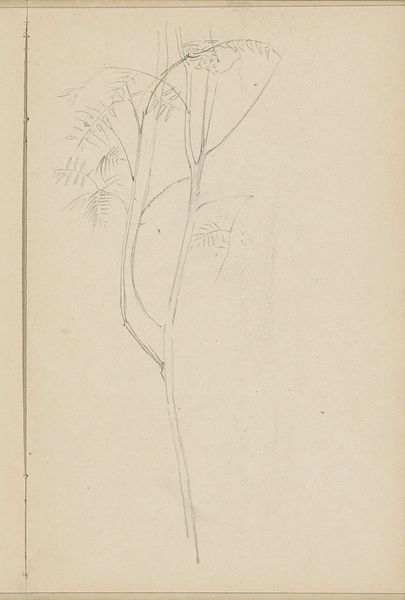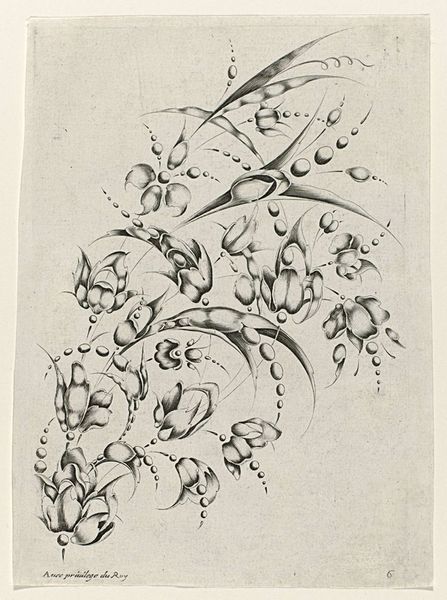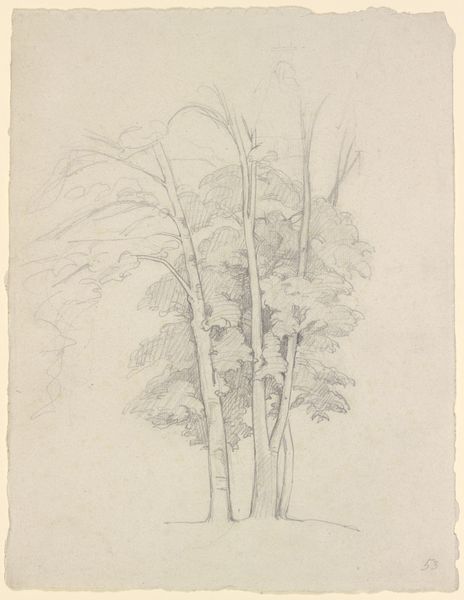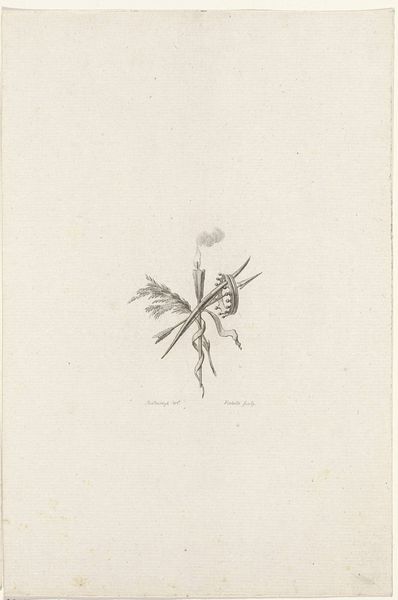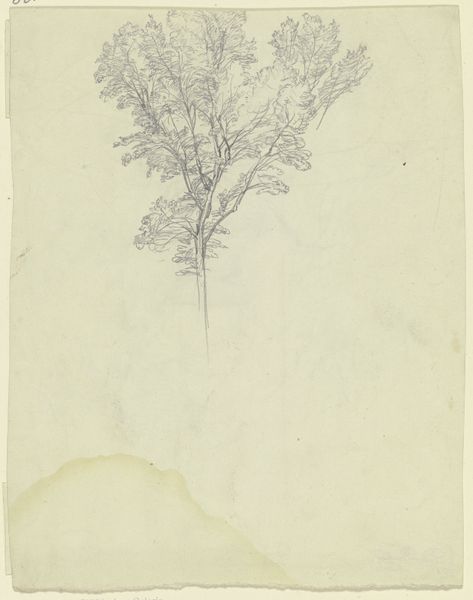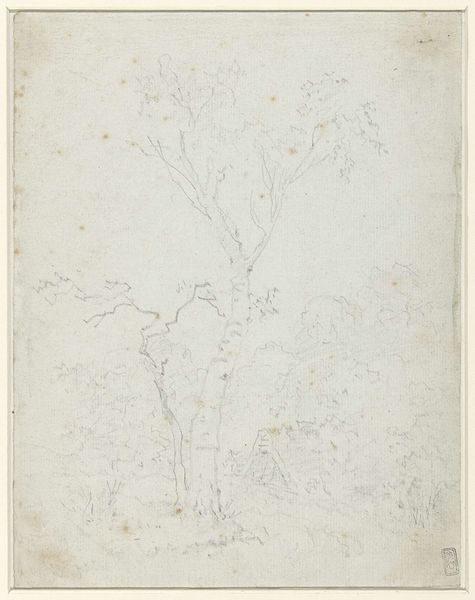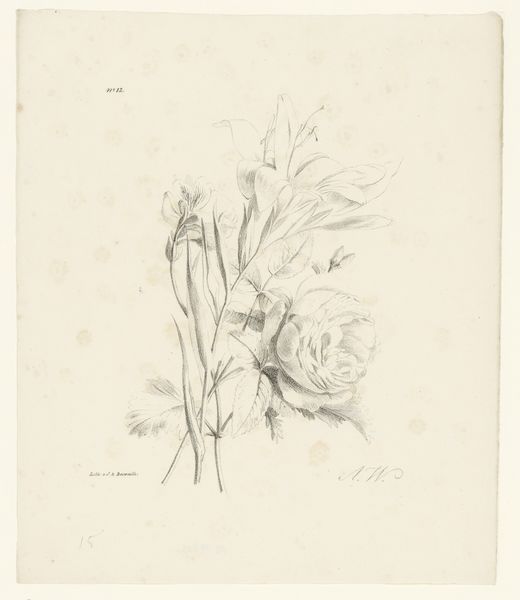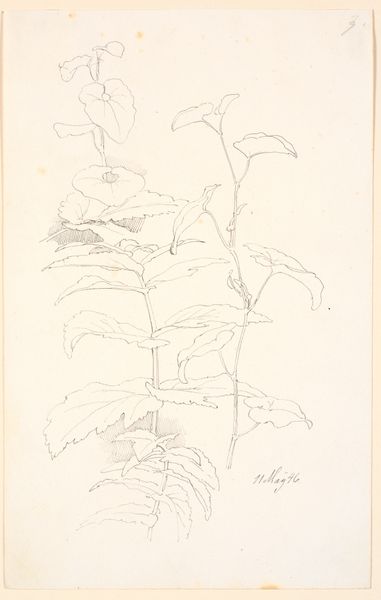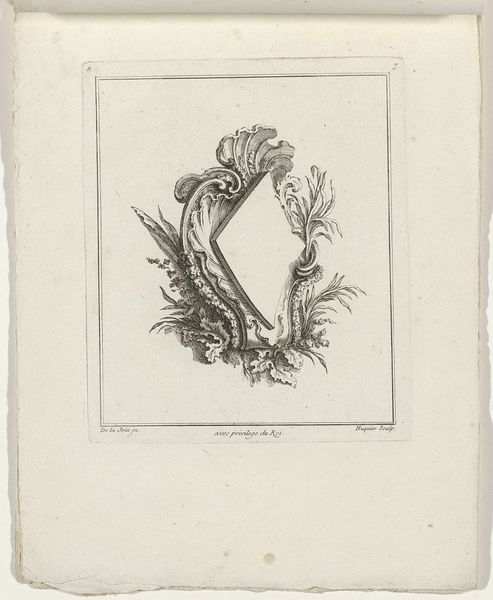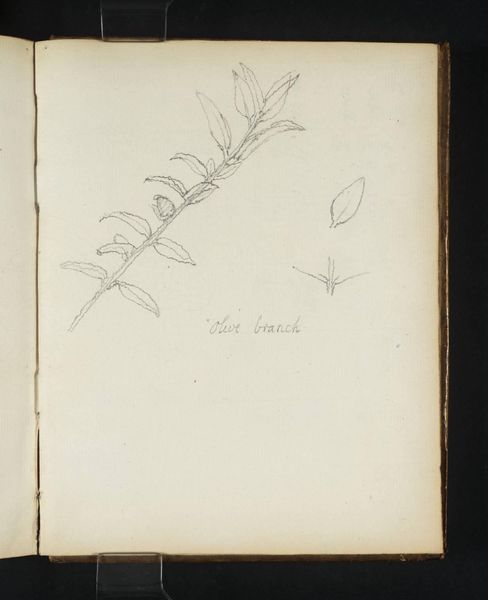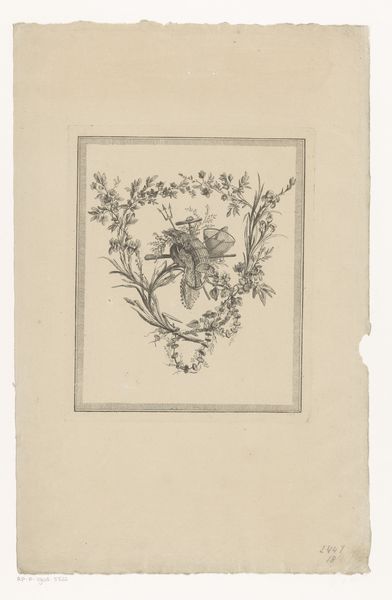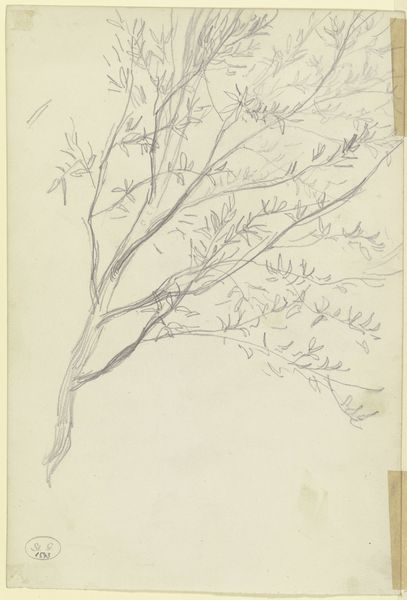
Dimensions: height 328 mm, width 210 mm
Copyright: Rijks Museum: Open Domain
Editor: So, here we have "Studies van papaver en jasmijn," or Studies of Poppy and Jasmine, a pencil drawing on paper by Elias van Nijmegen, estimated from 1677 to 1755. It feels like a preliminary sketch, almost scientific, but also quite delicate. What catches your eye when you look at it? Curator: It’s interesting to see this drawing in the context of the Dutch Golden Age. Flower paintings were hugely popular, practically a genre of their own, driven by both scientific curiosity and the market for decorative art. I wonder, how does this botanical study relate to the larger trend of flower paintings at the time? Editor: It's definitely less opulent than a typical Dutch still life. There aren’t any vibrant colours or signs of decay that baroque paintings might usually emphasize. It’s quite stark actually. Curator: Precisely. Its starkness offers a clue, I think. Given the flourishing horticultural market, a precise and detailed sketch like this probably served as a record, a preliminary design. Perhaps it even functioned as a study for a larger, more elaborate work meant for a wealthy patron’s home. Did botanical studies function in the creation and subsequent popularization of the market? Editor: So, almost like a prototype? Or maybe even something instructional, aimed at other artists trying to emulate Van Nijmegen? Curator: It's certainly possible. We often overlook the social networks and dissemination of knowledge that were active even then. Was this a record of scientific observations, meant for broader circulation among a community interested in botany? The fact it looks both Romantic and Baroque really puts its social context into perspective. Editor: It is easy to overlook how commercial artistic enterprise was, and your insight regarding how these botanicals reflect societal context is very helpful! Curator: Agreed. Looking at the drawing through a historical lens allows us to understand the purpose and intent behind it, beyond just its aesthetic qualities.
Comments
No comments
Be the first to comment and join the conversation on the ultimate creative platform.

